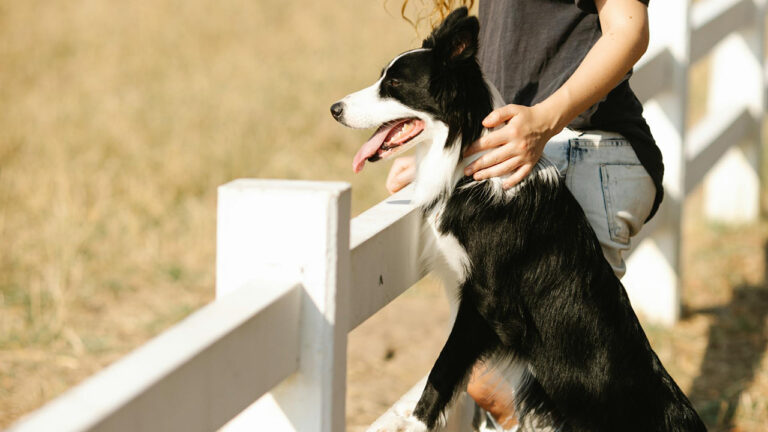If you put your barn in this spot, everything’s harder
You can build a barn anywhere on your land—but that doesn’t mean you should. The spot you pick will either make life easier or create problems you’ll deal with for years. Where you put it affects everything from how much work you do in bad weather to how often you’ll be repairing the foundation.
A barn that’s inconvenient, hard to access, or sitting in the wrong terrain turns everyday chores into frustration. Most of the time, people realize their mistake after it’s too late to move it.
Low spots collect more than water
It might look flat and open now, but that low section of your property will turn into a mess once the rain hits. Standing water around a barn doesn’t just make mud—it seeps under the foundation, attracts mosquitoes, and causes rot.
Even with gravel or French drains, a barn in a low area will always fight moisture. Equipment rusts faster, hay mildews, and animals end up slogging through mud every time it rains. Higher ground takes more prep upfront but pays off for decades.
Too far from utilities means constant headaches
Running power and water hundreds of feet to a barn adds more to your budget than most people expect. Every extra foot of trenching, piping, and wiring costs money—and maintenance down the road becomes harder.
When you’re picking a site, think about where your main water and electrical lines are now. Even if you don’t need both right away, you’ll be glad later when you decide to add lighting, outlets, or a frost-free hydrant. A little planning can save you thousands.
Poor road access makes daily use miserable

You’ll use your barn more than you think. Feed deliveries, equipment storage, livestock transport—it all needs a clear, solid path. If your barn is tucked too far off the main drive or in a soft spot, it turns simple tasks into full-on projects.
Gravel driveways hold up well, but only if they’re easy to reach and drain properly. A straight, dry approach means you won’t need to call a tow truck when the ground gets saturated or icy.
Facing the wrong direction causes constant issues
Wind and sun exposure matter more than people realize. A barn that faces into prevailing winds will always have dust, rain, and cold air blowing straight inside. Doors swell, bedding stays damp, and animals get chilled faster in winter.
You want the main doors facing away from the wind and angled to catch natural light during the day. That orientation keeps the interior drier, brighter, and far more comfortable to work in—especially when the seasons change.
Too close to the house makes daily life noisier and smellier
It’s tempting to build close for convenience, but barns bring smells, flies, and noise. If you’ve ever had livestock within a few yards of your porch, you know what that means.
Keeping a little distance helps with air flow and peace of mind. You’ll still be close enough to check on things easily but far enough that you can enjoy your yard without catching a whiff every time the wind shifts.
Ignoring future plans traps you later

The spot that works for one barn today might not work when you add fencing, a shop, or another structure down the line. A poor layout can block vehicle access, limit expansion, or mess with drainage once other buildings go up.
Sketch your long-term setup before you start building. Think about how you’ll move animals, vehicles, and supplies across your property. Planning ahead makes growth easy instead of frustrating.
Building without thinking about sun and shade
You might not notice it during construction, but barn placement affects temperature more than insulation does. A barn baking in full sun all day will stay hot into the night, while one shaded by trees might trap too much moisture.
Ideally, you want a balance—morning light to dry things out, afternoon shade to keep the inside cooler, and enough open space to let air circulate. A few hours of observation before you pick your spot can make all the difference.
Forgetting about drainage ruins the foundation
Even on level ground, a barn needs proper drainage. Without it, rainwater collects around the edges and seeps into the floor. Over time, the posts and concrete start to shift, and before long, doors don’t close right, and cracks form.
A gentle slope away from the structure, paired with gravel or gutters, keeps water moving. It’s one of those details that’s easier to get right at the start than fix later.
Putting it where the ground never dries
Every property has a “wet spot”—the area that stays soggy long after everything else has dried. If that’s where your barn sits, you’ll fight mud forever. Animals track it in, tractors sink, and cleaning becomes a constant chore.
Walk your land after a heavy rain and see where the puddles form. Build where the ground drains naturally. Dry footing doesn’t just make chores easier—it keeps your barn cleaner and your livestock healthier.
Picking the wrong spot means you’ll never stop adjusting
The best barn locations make work feel easier. You can pull up, unload, feed, and clean without having to think about the layout. But when you build in the wrong place—too low, too far, or too cramped—you end up compensating for it every single day.
A few days of planning can save years of frustration. Once that barn goes up, everything else on your property will revolve around it—so it’s worth getting the placement right the first time.
Like Fix It Homestead’s content? Be sure to follow us.
Here’s more from us:
9 small changes that instantly make a house feel high-end
The $60 Target haul that made my house feel way more put together
*This article was developed with AI-powered tools and has been carefully reviewed by our editors.







